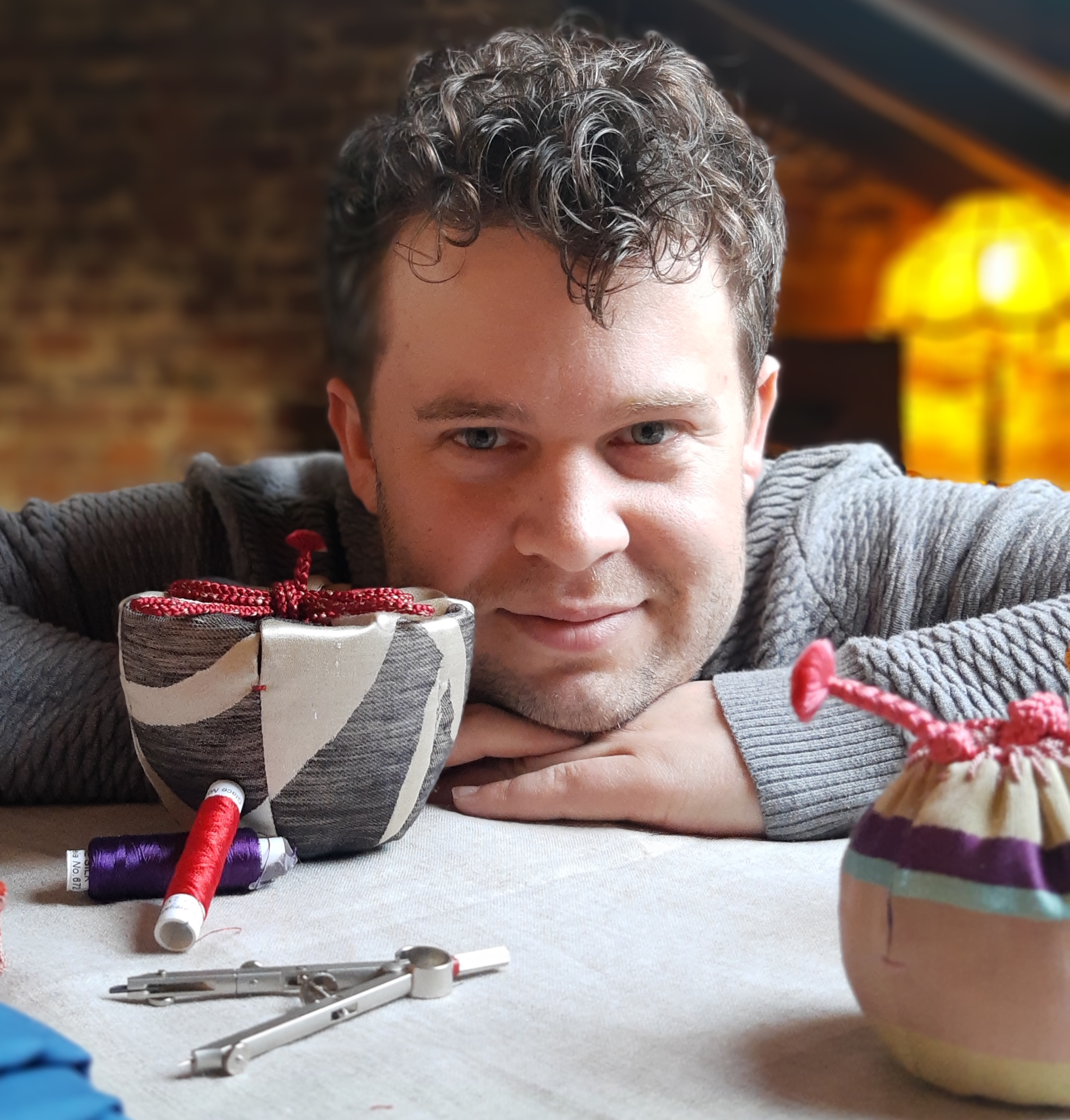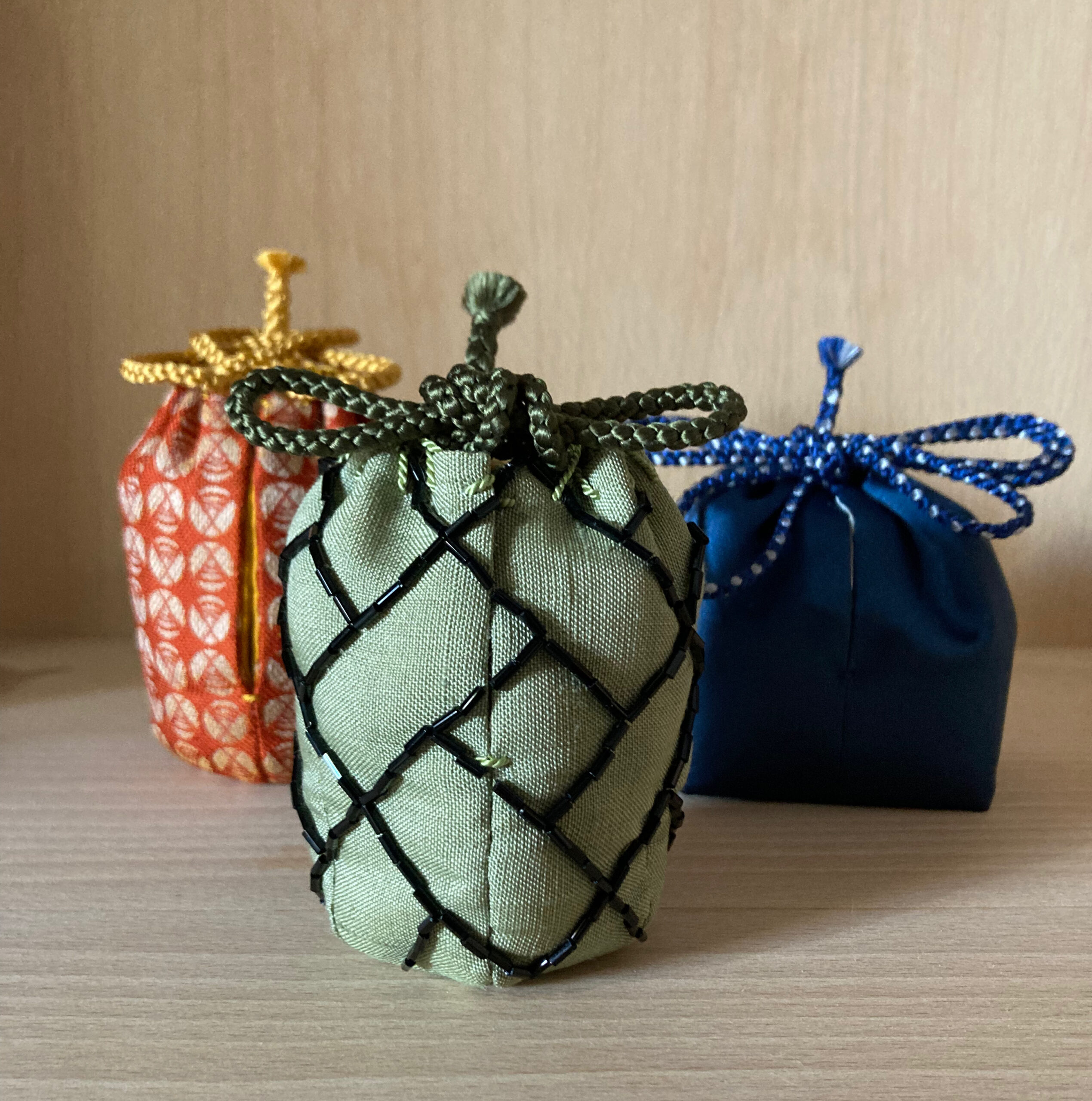In Chanoyu, the Japanese Tea Ceremony, valued and high status pieces such as the chaire (tea caddy) and prized chawan are displayed and used in the chashitsu (tea room) wrapped in beautiful silk pouches tied with a braided silk cord. These are shifuku 仕服. Literally clothes for tea wares. Born from the practical need to protect precious ceramics in a land prone to earthquakes, shifuku were just one of the many layers of pouches, boxes and wrappers a prized piece might be protected by. Much like clothes, each shifuku is individually made to measure for the piece it protects, fitting the ‘body’ closely. Indeed, it would not have been uncommon for a chaire to have multiple ‘outfits’, often accrued over the lifetime of the piece as successive owners commissioned their own shifuku.
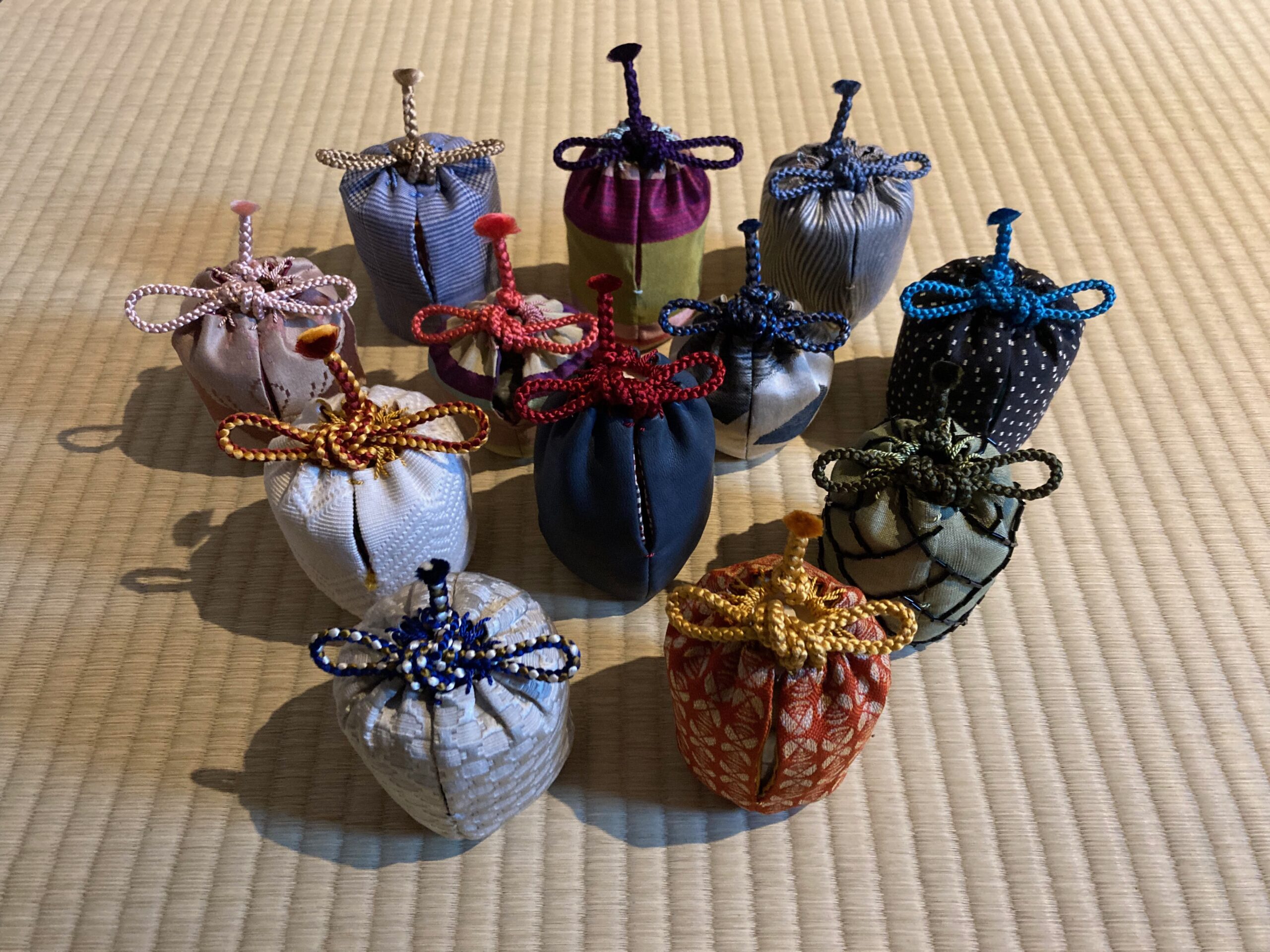
When selecting the toriawase (combination of pieces used for a tea ceremony), the option to choose between different shifuku according to types of fabric, pattern and colour is a bonus. A chajin (tea person) might consider the type or status of the fabric in relation to other wares they select. Likewise the colour and pattern of the fabric might be appropriate for different seasons or in combination with other items of the toriawase.
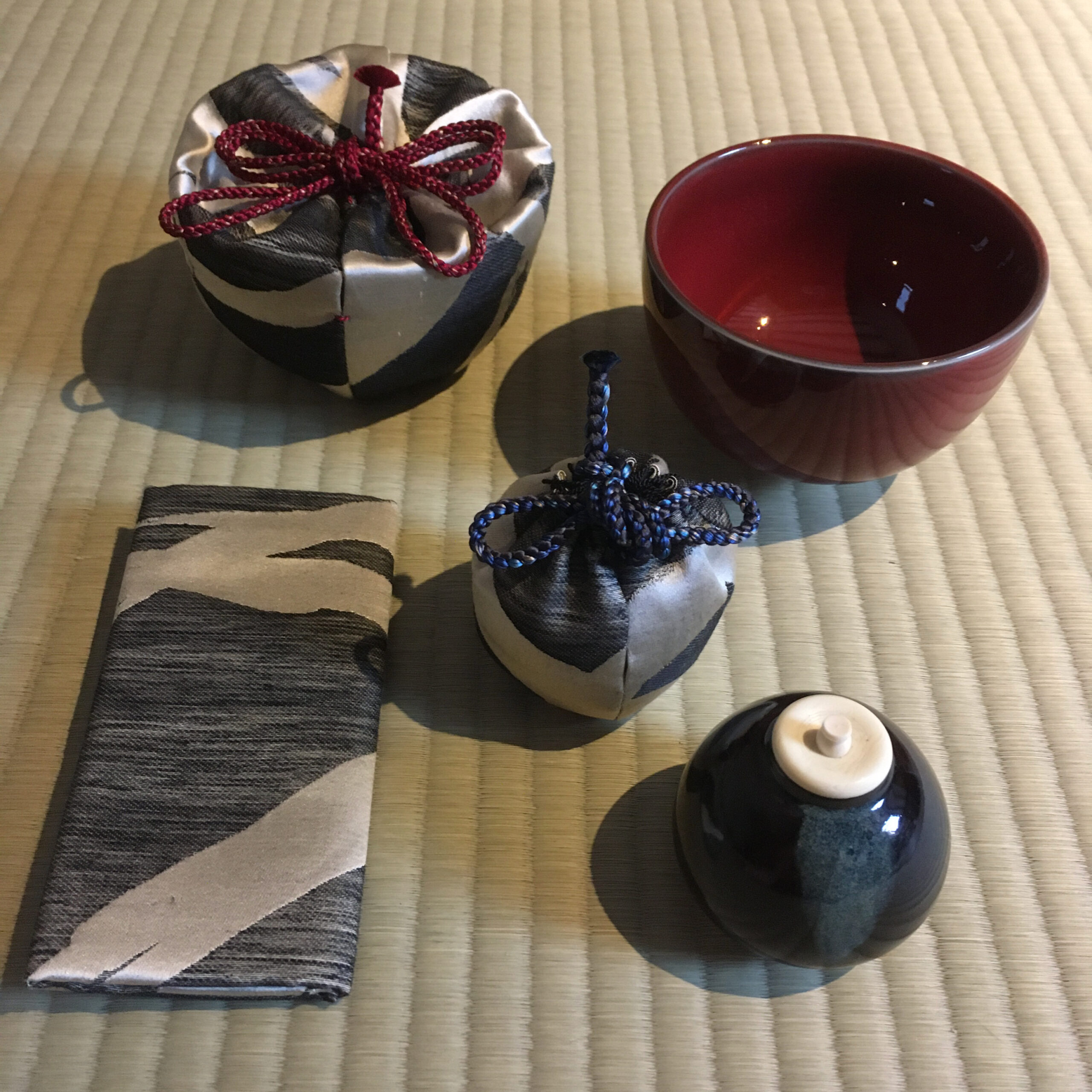
The traditional fabrics used for shifuku are known as the meibutsu-gire (famous or ‘named’ scraps) and compiled in collections. Often luxurious silk damasks and brocades, sometimes woven with gold or silver, many of the meibutsu-gire were luxurious imported textiles originally used for garments or in temples, and were later recycled into shifuku by tea masters. These historic textiles from around the world have been given Japanese names and reproduced specifically for use in the Chanoyu world over the last 400+ years, making them a fascinating and valuable historical source. Despite their beauty, shifuku are one of the unsung heroes of the tearoom. Whilst the meibutsu-gire textile is revered and its name be learnt and repeated at heiken (viewing of the object), the shifuku as objects are generally unsigned and their makers and history unsung and forgotten.
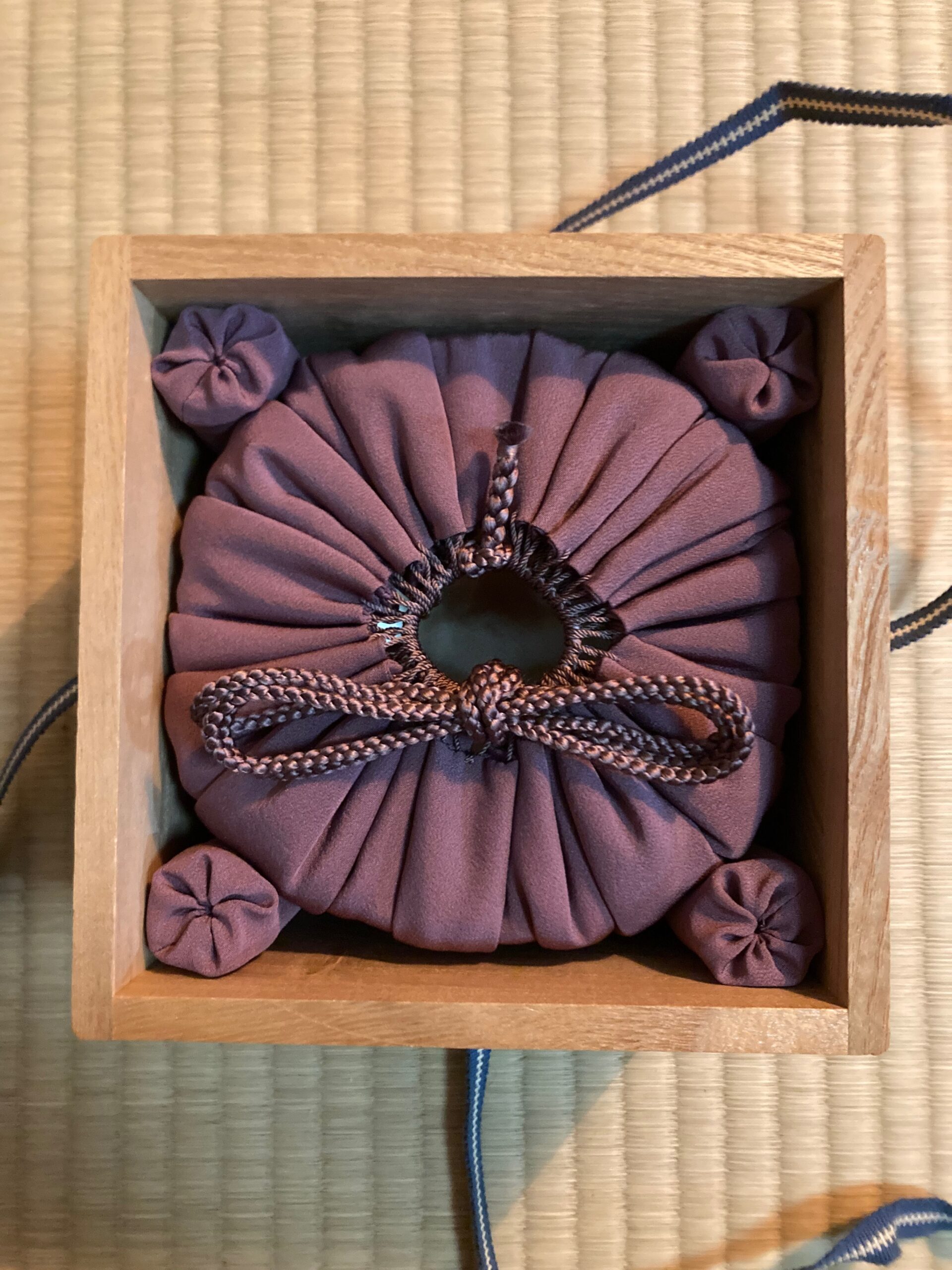
In my own shifuku practice, as well as using and researching traditional meibutsu-gire I continue the tradition of sourcing and recycling fabrics from both the fashion and interior design worlds. I work with my clients around the world to design and create shifuku for their tea wares that are a contemporary reflection of the tradition of shifuku and textiles in chanoyu. I sign all the pieces I make and encourage clients to share the story of designing and creating each shifuku rather than just the name of a fabric. Whilst shifuku are perhaps the most important of the textile wares used in the tea ceremony and the core of my work, there are many other textile wares that we use such as kobukusa & shikibukusa (serving cloths), shinobukuro (incense pouches) and sukiyabukuro (clutch bag used when attending a tea ceremony) and Chashaku (tea scoop) pouches. All of which I bring this same approach to.
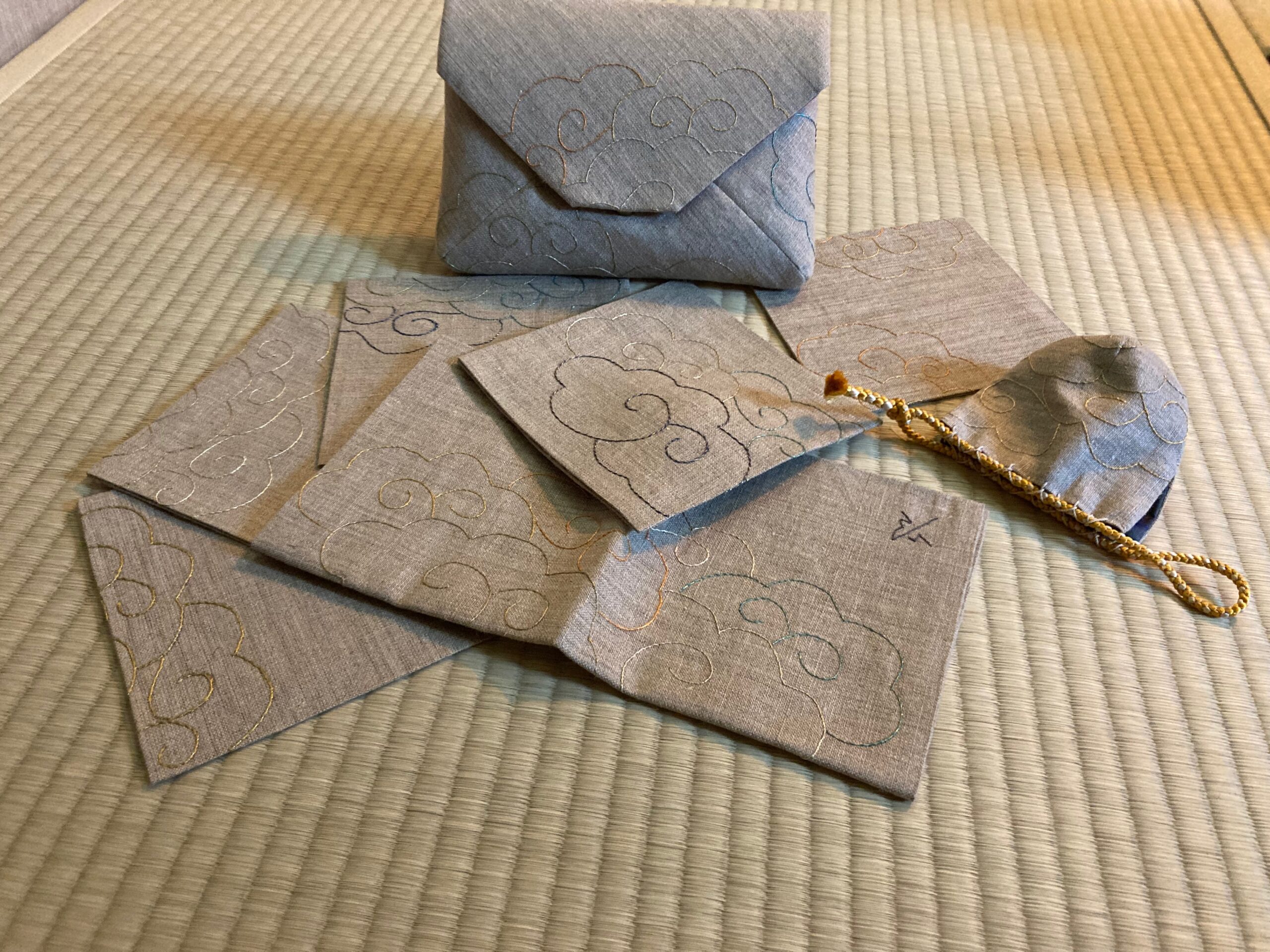
In my upcoming exhibition at Postcard Teas in London (2nd to 23rd December 2023) I will be exhibiting a range of my work and exploring what a shifuku is. The exhibition will feature pieces that question and explore what a shifuku is and how it’s made though an exploration of shape, textiles, construction, object response and its role as protection. I’ll be showing my debut “Cloud-Gire” embroidered collection and my new Tartan line. Both of these along with an exclusive new line of shifuku for Kaikado caddies and other selected teawares at Postcard Teas will be available to purchase.
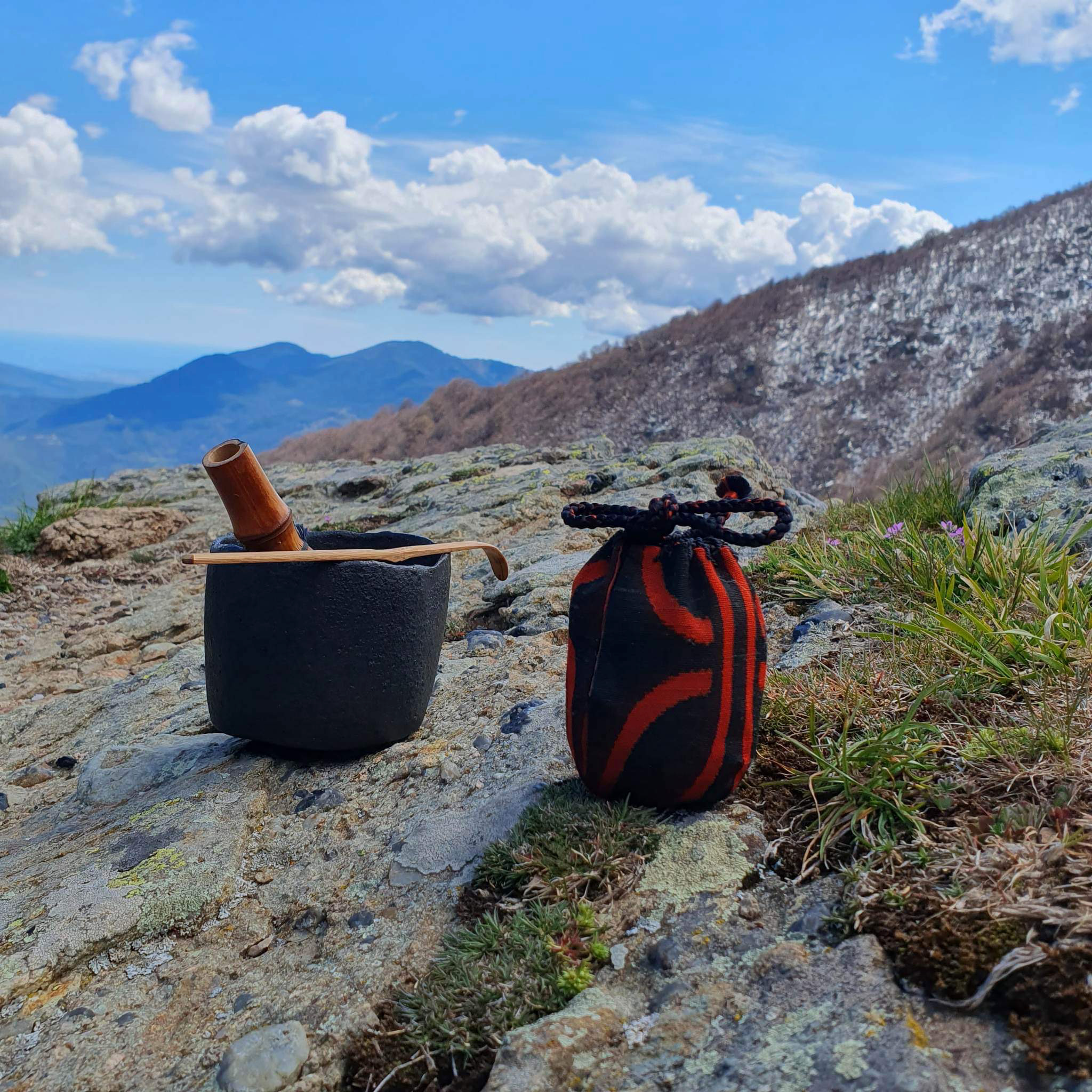
Article and photos by our Tea Fellow and chanoyu practitioner Kyle Whittington. You can find out more about Kyle and his handcrafted shifuku here. If you wish to read more in depth, here you can find some suggestions by Kyle:
- “Looking at White Dew” by Louise Allison Cort is an excellent article exploring an historic chaire with it’s collection of multiple shifuku, boxes and wrappings.
- Kyle’s research article “A Thrice named brocade” exploring one of the meibutsu-gire patterns.
